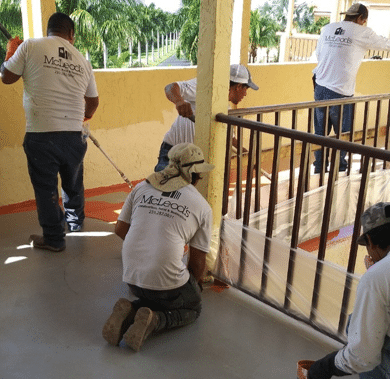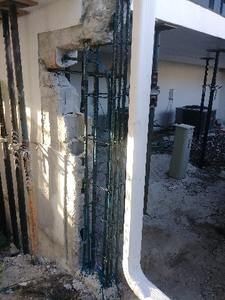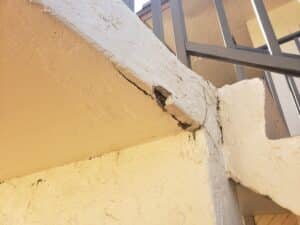Waterproofing is a crucial aspect of maintaining the structural integrity of any building. It involves creating a barrier that prevents water from penetrating the building’s surfaces, thereby safeguarding it from potential damage. Without effective waterproofing, properties are vulnerable to issues such as mold, mildew, and structural deterioration. These problems can lead to costly repairs and pose health risks to occupants.
Different surfaces and areas of a building require specific waterproofing solutions. For instance, the requirements for waterproofing a basement differ significantly from those for a commercial high-rise building. Understanding these differences helps in selecting the most effective methods and materials. Effective waterproofing solutions not only protect the building but also enhance its longevity and value. This makes it essential to consider all factors involved in the waterproofing process.
Whether you are dealing with basement leaks, roof leaks, or moisture seeping through walls, having a comprehensive understanding of waterproofing can make a significant difference. It is essential to approach waterproofing systematically by recognizing the challenges, choosing the right materials, and following the proper steps for implementation. This ensures that the building remains safe and dry, protecting both the structure and the occupants within.
Understanding Different Waterproofing Methods
There are several methods we can use to effectively waterproof a building. Each method is suited to different types of structures and surfaces. One common technique is liquid waterproofing. This involves applying a liquid coat that hardens into a seamless membrane. Liquid waterproofing is versatile and can be used on flat roofs, balconies, and even complex shapes. It creates a strong barrier that prevents water from seeping through the surface.
Another method is bituminous coating or membrane. This type is often used on basements and foundations. Bitumen is a sticky, black, and highly viscous material that provides excellent waterproofing properties. It can be applied as a coating or in sheet form, depending on the specific needs of the project. Bituminous membranes are highly effective at blocking moisture and can last for many years if properly maintained.
Cementitious waterproofing is also popular, particularly for interior areas like bathrooms and kitchens. This technique uses a mix of cement-based materials that are applied to surfaces to create a watertight seal. Cementitious waterproofing is easy to apply and provides a durable barrier against water. It is often used in conjunction with other waterproofing methods for added protection.
Common Waterproofing Challenges
Waterproofing can present several challenges that we need to address to ensure effective protection. One major challenge is dealing with existing moisture. Water can seep into buildings through cracks and joints, making it difficult to keep areas dry. Identifying and sealing these entry points is essential for successful waterproofing. If moisture is not adequately addressed, it can lead to mold growth and structural damage.
Another challenge is the varying weather conditions. Different climates require different waterproofing solutions. For example, regions with heavy rainfall need more robust waterproofing methods compared to arid areas. It’s important to consider local weather patterns when planning waterproofing projects to ensure long-lasting results.
Lastly, poor installation can compromise the effectiveness of waterproofing solutions. Even the best materials and methods won’t work if not applied correctly. Ensuring that experienced professionals install the waterproofing system is crucial. Proper training and quality workmanship can overcome these challenges and guarantee the building remains protected from water damage.
Choosing the Right Waterproofing Materials
Selecting the appropriate materials for waterproofing is crucial for the success of the project. Different materials have unique properties that make them suitable for specific applications. One popular choice is polyurethane, which offers excellent flexibility and strength. Polyurethane can be applied as a liquid, forming a seamless and durable membrane that can handle structural movements and temperature changes. This makes it ideal for roofs and decks.
Another effective material is EPDM rubber, which is highly durable and resistant to weathering. EPDM is commonly used for flat roofs and other exposed areas. It provides a long-lasting barrier against water and is known for its ability to withstand extreme temperatures. Additionally, EPDM is relatively easy to install and maintain, making it a popular choice for both residential and commercial properties.
Acrylic coatings are also widely used, especially for exterior walls and roofs. Acrylic waterproofing products are water-based and environmentally friendly. They offer excellent UV resistance, which helps protect surfaces from sun damage. Acrylic coatings are flexible and can be applied to various substrates, providing a versatile solution for many waterproofing needs.
Steps to Implement Effective Waterproofing Solutions
Successfully implementing waterproofing solutions requires a methodical approach. The first step is to inspect and prepare the surface to be waterproofed. This involves cleaning the area thoroughly to remove any dirt, debris, or previous coatings that could interfere with the new application. Next, we need to identify and repair any cracks or damage to the surface. This ensures that the waterproofing material adheres properly and provides a consistent barrier.
After the surface is prepared, we can apply the chosen waterproofing material. It’s essential to follow the manufacturer’s guidelines to ensure the product is applied correctly. Depending on the material, this might involve brushing, spraying, or rolling it onto the surface. We may need to apply multiple coats to achieve the desired level of protection.
Once the waterproofing material is in place, we must allow sufficient time for it to cure. Proper curing is essential for the material to form a strong and durable bond. After curing, it’s beneficial to conduct a final inspection to check for any missed spots or areas that need additional attention. Regular maintenance and periodic inspections will help ensure the longevity of the waterproofing solution, keeping the building protected for years to come.
Conclusion
Effective waterproofing is essential for maintaining the integrity and longevity of any building. By understanding the different methods, addressing common challenges, selecting the right materials, and following proper implementation steps, we can achieve reliable waterproofing solutions. These measures protect the building from water damage, enhance durability, and contribute to a healthier indoor environment.
For comprehensive and dependable services, contact McLeod’s Contracting Solutions. Our team of Fort Myers waterproofers is dedicated to providing high-quality solutions tailored to your specific needs. Get in touch with us today to ensure your building remains watertight and well-protected.







